#ismihan sultan daughter of selim ii
Text
Sultanate of Women (3/7)
Nurbanu Sultan (c.1525/ 7 December 1583)

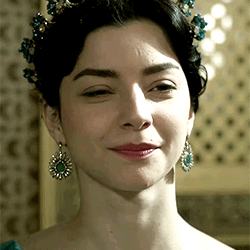
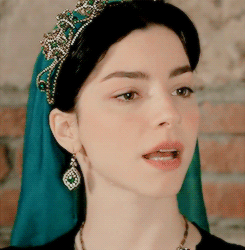
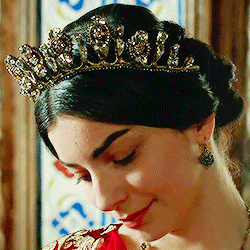
Daughter of Nicolo Venier and Violanta Baffo
Haseki Sultan (Legal Wife) of Sultan Selim II and Valide Sultan of Sultan Murad III
Mother of Sultan Murad III, Sah Sultan, Ismihan Sultan, Gevherhan Sultan, and Fatma Sultan
Grandmother of Sultan Mehmed III, Sehzade Mahmud, Sehzade Mustafa, Sehzade Oman, Sehzade Bayezid, Sehzade Selim, Sehzade Cihangir, Sehzade Abdullah, Sehzade Ahmed, Sehzade Yakub, Sehzade Alemsah, Sehzade Yusuf, Sehzade Hüseyin, Sehzade Korkud, Sehzade Ali, Sehzade Ishak, Sehzade Alaeddin, Sehzade Davud, Sehzade Suleiman, Sehzade Yahya, Hümasah Sultan, Ayse Sultan, Fatma Sultan, Mihrimah Sultan, Rukiye Sultan, Mihriban Sultan, and Fahriye Sultan.
Mother-in-law of Çakırcıbaşı Hasan Pasha, Zal Mahmud Pasha, Sokullu Mehmed Pasha, Kalaylıkoz Ali Pasha, Safiye Sultan, Piyale Pasha, Cerrah Mehmed Pasha, and Kanijeli Siyavuş Pasha
Fun Fact For Newbies: Nurbanu Sultan was born Cecilia Venier-Baffo
44 notes
·
View notes
Photo







Ottoman Princesses named: Esma
Esma is the Turkish variation of the Arabic name Asma, meaning exalted, supreme or sublime. Sometimes it is written as Ismi, especially in compounds like Ismihan.
#history#historyedit#ottoman history#ismihan sultan daughter of selim ii#kaya ismihan sultan daughter of murad iv#esma sultan daughter of abdulhamid i#esma sultan daughter of ahmed iii#esma sultan daughter of abdulaziz#ottomanladiesedit#princessesnames
198 notes
·
View notes
Quote
In the sixteenth and seventeenth centuries Ottoman sultans did not usually contract legal marriages. Their women were all slaves. No legal barriers against sultanic marriage existed, but custom was against it and in the Ottoman world custom had often the force of law. Süleyman the Magnificent dared to break this tradition by marrying Hürrem, his favourite concubine, with a great ceremony and lavish festivities even if Ottoman sources do not mention the fact. His heirs had not his courage in putting aside custom and, if they got married, they made it quietly, behind the protective walls of the Imperial Palace. Even the memory of these marriages is almost lost.
According to the report of the envoy Jacopo Ragazzoni, Süleyman’s son, Selim II, married his haseki, Nur Banu. The report was presented to the Senate on 16 August 1571 and Ragazzoni says that the marriage had been celebrated six months before. The same information is given by Giovanni Correr in 1578 and Giacomo Soranzo in 1584. They also add that for this reason Nur Banu could sit and eat in the presence of the sultan, while Safiye could not. We know that Osman II also contracted a legal marriage with Akile, the daughter of the müfti Esad efendi, and the mad İbrahim married his concubine Hümaşah, known as Telli Haseki, in an elaborate ceremony of state. An Ottoman historian, namely Mustafa Ali, refers to Safiye as the sultan’s wedded wife. But since foreign sources maintained that Murad III did not marry his haseki, nobody has believed him. In 1585 the baylo Giovanni Francesco Morosini reports that the sultan never made “chebin” for her. This word is the ambassador’s rendering of the popular Turkish kābin, namely the settlement made by a Muslim husband to his wife at the time of their marriage. But Giovanni Francesco Morosini left Istanbul in June 1585 and people began to talk about Safiye’s marriage only after this date. In October of the same year the baylo Lorenzo Bernardo was informed by Esther kira that the marriage between the sultan’s daughter Ayşe and İbrahim paşa was about to take place, and that the sultana wanted to get married at the same time. İbrahim paşa had been betrothed to the sultan’s daughter since 1582, but Nur Banu was against this marriage; as damad she wanted her adoptive son, the kapıcıbaşı Mahmud, who when still a child had been given to her by Selim II. For this reason İbrahim paşa was appointed beylerbeyi of Egypt. After Nur Banu’s death, in December 1584, Mahmud married the rich daughter of Ahmed paşa, sister of Çiğala-zâde Sinan’s wife; in this way he gave up every hope to marry Ayşe, since in order to marry a sultana a man had to repudiate his other wives.
On 11 December both marriages were projected for the feast of Nevruz, at the beginning of spring. On receiving the news the baylo immediately sent a letter to Venice, and some chairs to the sultan and the sultana. Some years before, in 1582, other chairs had been sent to Sokollu Mehmed paşa for his marriage with İsmihan: in fact Venetians used to present pieces of forniture to members of the Ottoman imperial family for their weddings. On 24 December Safiye replied, thanking for the gift and “for the happiness that the lords of Venice will feel for what had been determined”. The Venetian Senate immediately sent her a letter of congratulations upon the occasion of her marriage. At the beginning of April the sultana thanked the baylo for his lords’ letter which she had just received and, by means of Esther kira, asked him for perfumes and odoriferous oils for her wedding, while her daughter’s one was postponed till the end of May.
Taken from: Maria Mia Pedani, Safiye’s Household and Venetian Diplomacy
#safiye sultan#nurbanu sultan#ottoman history#history#historicalquotes#quote#some quote since I've always reiceived many asks about legal marriages of ottoman sultans to their slave concubines#as I said before safiye/murad marriage is not 100% confirmed though
38 notes
·
View notes
Photo
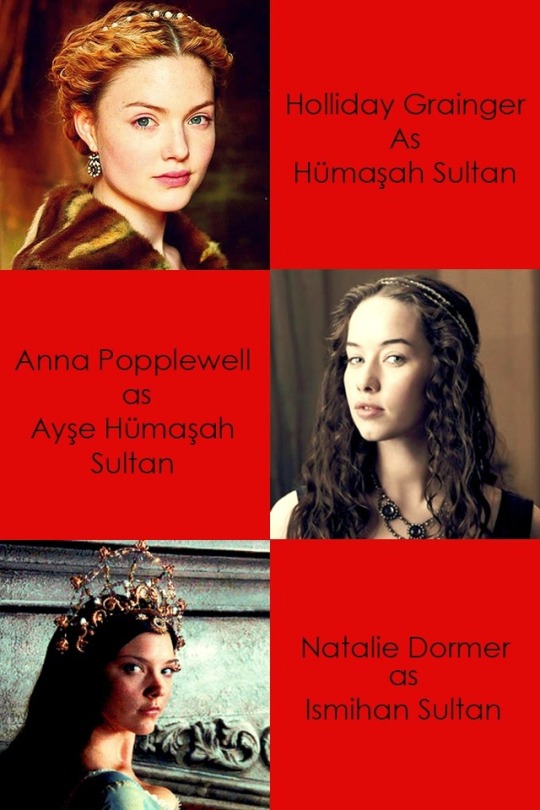

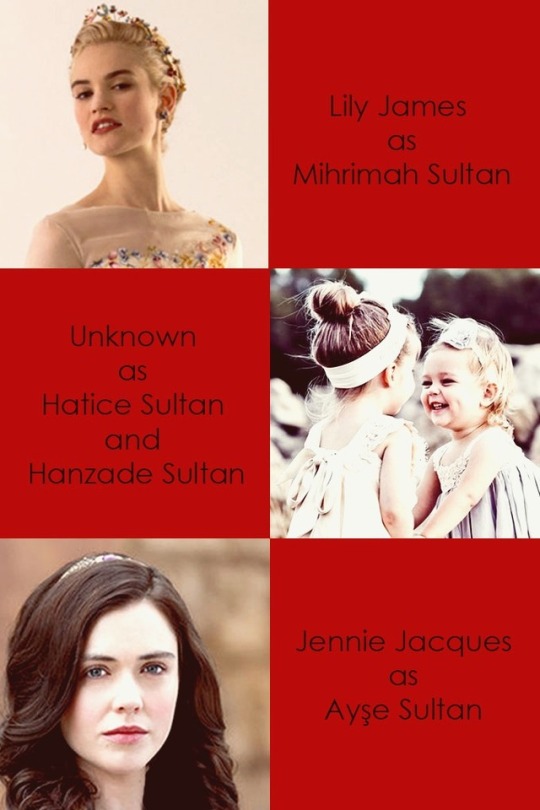
Muhteşem Yüzyıl (Magnificent Century) fancast: Daughters of Hürrem Haseki Sultan. Second generation.
1. Hümaşah Sultan (1540-1593) - daughter of Şehzade Mehmed of the Ottoman Empire.Like her cousin Ayşe Hümaşah Sultan, she was reportedly beloved by their grandfather, to whom she wrote letters.She is regarded amongst the most influential women of Suleiman's reign.This affection can be explained, in large measure, by the fact that her late father, Mehmed, was Suleiman's favorite son. It was she who, in 1563, gifted her cousin Şehzade Murad (future Sultan Murad III) with a concubine that would go on to be Safiye Sultan.
2. Ayşe Hümaşah Sultan (1541–1594) - daughter of Mihrimah Sultan of the Ottoman Empire and Rüstem Pasha. She was her parents' first child and only daughter, and possibly her grandparents' first grandchild as well. She had several brothers, whose number and names are though contested.
3. Ismihan Sultan (1544 – 1585) - daughter of Selim II and Nurbanu Sultan. She was the most powerful daughter of Selim II because she was married to the Grand Vizier Sokollu Mehmed Pasha. She is famous for having built the Sokollu Mehmed Pasha Mosque and Esmahan Sultan Mosque.
4. Gevherhan Sultan (1544 - after 1604) - daughter of Sultan Selim II and Nurbanu Sultan. Soon after his succession, Mehmed's son by Handan Sultan, Ahmed I wanted to express his gratitude to Mehmed Pasha and Gevherhan Sultan for the role they had played in bringing his parents together. He also named one of his daughters after her.
5. Şah Sultan (1545 – 1580) - daughter of Selim II and Nurbanu Sultan. The union of Şah Sultan to Zal Mahmud is said to be a very happy one. They were suited to each another. It was said that, that they fell ill at the same time, lay in their deathbeds together, and expired at the same very moment.
6. Fatma Sultan (1559–1580) - daughter of Sultan Selim II. Fatma was born in 1559,during Selim's princedom, at Konya or Karaman where he served as sanjakbey, or provincial governor, at the time.
7. Mihrimah Sultan (1547 – 1594) - daughter of Şehzade Bayezid. Married in 1562 to Damat Müzaffer Pasha.
8. Hatice Sultan and Hanzade Sultan (1550/1556-?) - daughters of Şehzade Bayezid.
9. Ayşe Sultan (1553- 1572) - daughter of Şehzade Bayezid. Married in 1562 to Damat Hoca Ali Pasha Eretnaoğlu.
#hurrem sultan#magnificent century#muhteşem yüzyıl#Mihrimah Sultan#nurbanu sultan#sultan suleyman#perioddramaedit
34 notes
·
View notes
Text
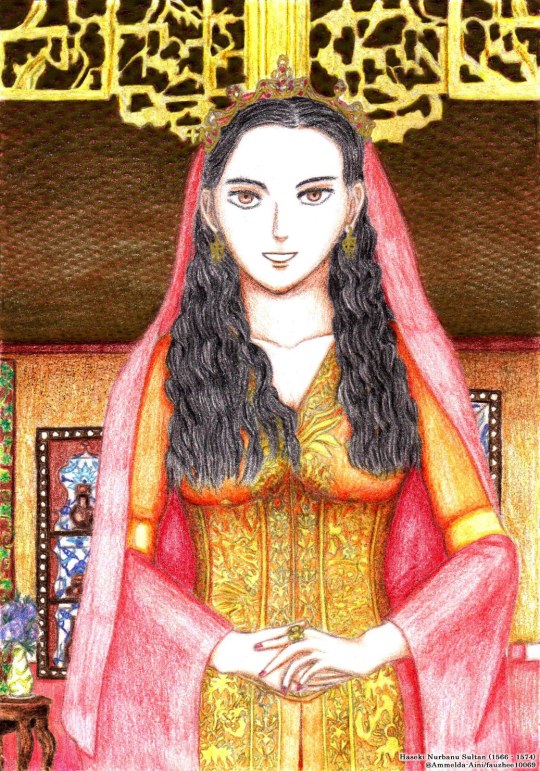
Haseki Nurbanu Sultan (Muhtesem Yuzyil) by Ammelda-Aini
Haseki Afife Nurbanu Sultan (tenure: 1566 - 1574) was Haseki Sultan of the Ottoman Empire as the principal consort and later legal wife of Sultan Selim II (reign 1566–1574), and later Valide Sultan as the mother of Sultan Murad III (reign 1574–1595). In Muhteşem Yüzyıl, she was Venetian origin and her birth name was Cecilia Venier-Baffo. While her spouse Selim still a şehzade, Nurbanu had been the head of his princely harem at Manisa. However, when Selim ascended to the throne, she was not head of the imperial harem, as that was a position taken by Selim's elder sister Mihrimah Sultan. Nurbanu acted as an advisor to her husband. Although it was far from normal at the time, Selim II would often ask Nurbanu for her advice on various subjects because of his respect for her good judgment. Like his predecessor Selim let his favorite wife remain at Topkapı throughout his reign.[11] She had four children with Selim II: Sultan Murad III, Ismihan Sultan, Gevherhan Sultan, and Şah Sultan.
Further information: Afife Nurbanu Sultan.
I drew Nurbanu with anime/manga style. Her design here taken from Turkish historical drama "Muhteşem Yüzyıl" (starred by Merve Boluğur):


The next one will be featured Safiye Sultan, Nurbanu's daughter-in-law.
Previous work: Haseki Hürrem Sultan.
1 note
·
View note
Note
What kind of lives and careers would the nephews of Sultans live out? By that I mean the sons of princesses. Who would they usually marry? While their children weren’t considered official royal family members, could they expect any special esteem among the Ottoman aristocracy? There were so many of them lol.
Sultanzades usually pursued either a military career (several of Suleyman I's nephew and uncles were army generals) or a career in the provinces as governors.
We don't have much information about the wives of sultanzades. There are exceptions, of course:
Ayşe Hümâ-Şâh's grandson Mahmud Paşa — who is not technically a sultanzade but just a descendant — married a daughter of Mehmed III, therefore becoming a damad
Sultân-zâde Dâmâd Mehmed Çelebî (son Fatma Sultan, daughter of Bayezid II) married his cousin, Ayşe Sultan (daughter of Şehzâde Alem-şâh)
Sultân-zâde Mehmed Paşa (son of Gevher-mülük sultan, daughter of Bayezid II) married his cousin, Ayşe Hân-zâde Mihr-i Hân Hanım-Sultân (daughter of Ayşe Sultan, daughter of Bayezid II)
Sultân-zâde Yahyâpaşa-zâde Gaazî Küçük Balı Paşa (yes, MC!Bali Bey) (son of Şâh-zâde sultân, daughter of Bayezid II) married his cousin Hân-zâde Hanım-Sultân (daughter of Aynişâh sultân, daughter of Bayezid II)— not only that, but Aynişâh sultân herself was married to a Sultanzade, Göde Ahmed Bey, the son of Mehmed II's daughter Gevherhan
Sultân-zâde Mehmed Bey (son of a daughter of Bayezid II's) married one of Selim I's daughters, Gevherhan Sultan
Hümâ-Şâh Sultân's son Sultân-zâde Sokollu-zâde ‘Abdülbâkî Bey married Safiyye Hanım-Sultân, the daughter of Ismihan Sultan and Sokollu Mehmed Paşa
Sultanzades could also have married daughters of pashas, though if they didn't contract a dynastic marriage we don't have a record of their wives. Sultân-zâde İbrâhîm Hân /Paşa (another son of Ismihan Sultan) had descendants until the XX century and one of his descendants married a daughter of Mehmed V's but that's the only wife we know about for four centuries.
By the way, yes, sultanzades' offspring weren't titled but were considered part of the élite anyway and a marriage with them was advantageous.
#ask post#ask: ottoman history#ayse humasah hanimsultan#humasah sultan daughter of sehzade mehmed#aynisah sultan daughter of bayezid ii#ismihan sultan daughter of selim ii#gevherhan sultan daughter of selim i#buffyboleyn
30 notes
·
View notes
Photo






𝐭𝐡𝐞 𝐠𝐫𝐚𝐧𝐝𝐝𝐚𝐮𝐠𝐡𝐭𝐞𝐫𝐬 𝐨𝐟 𝐒𝐮𝐥𝐞𝐲𝐦𝐚𝐧 𝐭𝐡𝐞 𝐌𝐚𝐠𝐧𝐢𝐟𝐢𝐜𝐞𝐧𝐭
#history#historyedit#ottoman history#suleyman i#nergissah sultan daughter of sehzade mustafa#ayse humasah sultan#humasah sultan daughter of sehzade mehmed#ismihan sultan daughter of selim ii#gevherhan sultan daughter of selim ii#sah sultan daughter of selim ii#mihrimah sultan daughter of sehzade bayezid#hatice sultan daughter of sehzade bayezid#sah sultan daughter of sehzade mustafa#ayse sultan daughter of sehzade bayezid#hanzade sultan daughter of sehzade bayezid#fatma sultan daughter of selim ii#ottomanladiesedit
258 notes
·
View notes
Photo

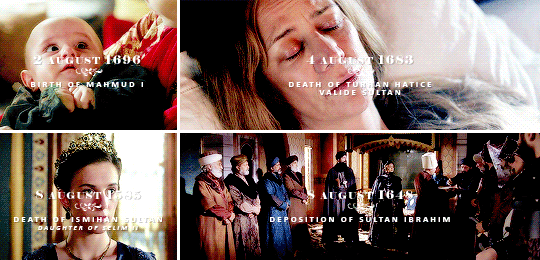


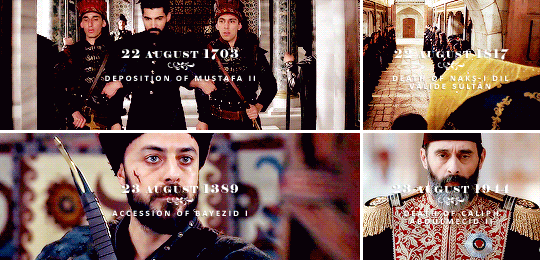




𝐢𝐧 𝐭𝐡𝐞 𝐦𝐨𝐧𝐭𝐡 𝐨𝐟 𝐚𝐮𝐠𝐮𝐬𝐭 𝐢𝐧 𝐨𝐭𝐭𝐨𝐦𝐚𝐧 𝐡𝐢𝐬𝐭𝐨𝐫𝐲 | insp by @winterhalters
#history#historyedit#ottoman history#ottomanladiesedit#*everymonth#turhan hatice sultan#ismihan sultan daughter of selim ii#ibrahim I#ayse sultan daughter of abdulhamid ii#esma sultan daughter of ahmed iii#cemile sultan daughter of abdulmecid i#mustafa ii#naksidil sultan#bayezid i#abdulmecid ii#emine sultan daughter of abdulaziz#aliye sultan daughter of murad v#behice sultan daughter of abdulmecid i#fatma sultan daughter of abdulmecid i#rukiye sabiha sultan daughter of mehmed vi#selim i#murad v
137 notes
·
View notes
Photo
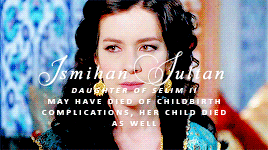

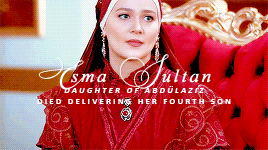
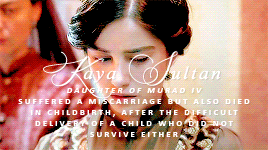




OTTOMANLADIES’ 2ND BIRTHDAY CELEBRATIONS
ottoman women who suffered miscarriages, stillbirths, became unable to have children or died in childbirth – requested by anon
#history#historyedit#ottoman history#safiye sultan#ismihan sultan daughter of selim ii#kaya ismihan sultan daughter of murad iv#safiye sultan daughter of murad iv#esma sultan daughter of abdulaziz#bedrifelek kadin#emine nazikeda kadin#hayriye hanimsultan#ottomanladiesedit#*requested
361 notes
·
View notes
Note
Princesses who were politically active?
Nefise Melek Hatun: daughter of Murad I, she married Karamânoğlu Alâeddîn Alî Bey and acted as mediator between her father and her husband during the Ottoman-Karaman conflict.
Selçuk Hatun: daughter of Mehmed I, she had a long life in which she acted as ambassador in the conflict between the future Bayezid II and his half-brother Cem
Mihrimah Sultan: daughter of Suleyman I and Hurrem Sultan, she was married to the Grand Vizier but exerted political influence in her own right as well. As a widow, she helped her brother Selim II both politically and economically (lending him money to pay the troops). She also managed the harem for him. Her daughter Ayşe Hümâ-Şâh was influential as well, being married to her father's successor.
Ismihan Sultan: daughter of Selim II, she was married to the Grand Vizier and as such was the most influential among her sisters. She also wrote to Catherine de Medici about some Turkish ladies who had been captured by Frenchmen at sea.
Hatice Sultan: daughter of Mehmed IV, she became her brother Ahmed III's advisor during his reign and she was one of the people who stayed with him until the end.
Fatma Sultan: daughter of Ahmed III, she was regarded as the true power in the Tulip Era. She was married to the Grand Vizier and even entertained foreign ambassadors who wanted to speak with him or with her father.
Esma Sultan the elder: daughter of Ahmed III, she became influential during the reigns of her brothers Mustafa III and Abdülhamid I to the point she was called a new Ismihan Sultan. She also was married to the Grand Vizier. Esma Sultan prevented a coup d’état against Abdülhamid I by warning him that Halil Hamid Paşa planned to depose him in favour of Şehzade Selim
Beyhan and Hatice Sultan: daughters of Mustafa III, they were behind the process of modernization in palace life and were very influential during their half-brother Selim III's reign.
Esma Sultan the younger: daughter of Abdülhamid I, she was Mahmud II's favourite sister even though they had different mothers. She was selected by dissidents as a possible replacement for Mahmud II on the throne.
Seniha Sultan and Fatma Sultan: daughters of Abdülmecid I, they were against Abdülhamid II's rule and tried to free Murad V from Çırağan Palace to put him back on the throne. In this they were helped by their brothers Ahmed Kemaleddin and Selim Süleyman.
Fehime Sultan: daughter of Murad V, she was a supporter of the constitution and composed a piano sonata titled "Pour La Constitution"
I hope I haven’t forgotten anyone. If I did, I’m sorry.
#anon#ask post#ask: ottoman history#nefise hatun daughter of murad i#selcuk hatun daughter of mehmed i#mihrimah sultan#ismihan sultan daughter of selim ii#hatice sultan daughter of mehmed iv#fatma sultan daughter of ahmed iii#esma sultan daughter of ahmed iii#beyhan sultan daughter of mustafa iii#hatice sultan daughter of mustafa iii#esma sultan daughter of abdulhamid i#seniha sultan daughter of abdulmecid i#fatma sultan daughter of abdulmecid i#fehime sultan daughter of murad v
58 notes
·
View notes
Note
Do jnow something about the descendants of Nurbanu daughters?
Hi, I have done some research and I even tried to make a family tree of them but when uploaded on tumblr you can’t read anything sigh.
We’ll consider Nurbanu’s daughters to have been Ismihan, Gevherhan and Şah Sultan.
Ismihan Sultan
with Dâmâd Sokollu Mehmed Paşa:
Safiyye Hanim-Sultan (1562? ?): she married Sokollu-zâde Silâhdâr Câ'fer Paşa and had two posthumous children with him, twins Mehmed and Cafer Bey.
Sultân-zâde Sokollu-zâde İbrâhîm Hân/Paşa (1565 – 1622?): head of the İbrâhîm Hân-zadeler dynasty, whose descendants are still alive. I’m not listing them all (because they’re a lot) but at the end of the XIX century, Abdülhâdî Hikmet Bey (d. 1882)’s grandson, Abdülbâqî Ihsân Bey, married a granddaughter of Mehmed V, Rukiye Sultan. With her, he had a daughter: Behiyye Emel Nûr-i Cihân Hanım-Sultân (b. 1925), who may still be alive. The princess has/d three children: Banu Hodo (b. 1952), Bala Hodo (b. 1955) and Nazim Hodo (b. 1958). Another grandson of Abdülhâdî Hikmet Bey, called Abdülhâdî Hikmet Bey too, had four sons who may still be alive: Abdülkerim Cevdet Bey, Osmân Bey, Mehmed Orhân Bey and Mehmed Isfendiyâr Bey.
Gevherhan Sultan
with Dâmâd Piyâle Pâşâ:
Ayşe Â’tike Hanım-Sultân (1563 ?) = Doğancıbaşı Fülân Ağa — descendants unknown
X Hanım-Sultân = Sinanpaşaoğlu Mehmed Paşa — descendants unknown
I don’t know if these are two daughters or the same daughter who remarried. I only know that the nameless princess married Sinanpaşaoğlu Mehmed Paşa in 1598, when Gevherhan’s second husband was Grand Vizier.
with Dâmâd Cerrah Mehmed Paşa:
Hatice Hanım-Sultân = Ibrahim Paşa — descendants unknown
Sultanzade Salih Bey — descendants unknown
I wasn’t able to find who this Ibrahim Paşa is, unfortunately.
Şah Sultan
with Dâmâd Zal Mahmûd Pâşâ:
X Hanım-Sultân = Abdal Hân, governor of Bitlis. The two had two sons: Zıyâüddîn Hân (1655-1656) and Celâlüddîn ��eref Hân VI (1657-1670), who became governor of Bitlis after his father's death. From him descends Bedrhân Paşa (1802-1867), whose son Abdürrahmân Bey married Azım-zâde Selwâ Hanım. From the Azım-zâde family descends the historian Öztuna himself.
Sultân-zâde Köse Husrev Paşa — descendants unknown
#anon#ask post#ask: ottoman history#nurbanu sultan#ismihan sultan daughter of selim ii#gevherhan sultan daughter of selim ii#sah sultan daughter of selim ii#Anonymous
19 notes
·
View notes
Note
Why did they (i don’t know who, but I think all people/her father/her mother) choose esmehan to marry a high rank, Sokollu Mehmed? Why not a Sah (the first daughter of Selim)?
because we don’t actually know the order of birth of Nurbanu’s daughters. Şah, Gevherhan and İsmihan is the order that Peirce gives in The Imperial Harem unfortunately without source (though she has a date for each of them: "Şah Sultan and Gevherhan Sultan were born in 951 (1544/1545), Ismihan Sultan in 952 (1545), and Murad in 953 (1546)."). Kumrular, who writes in 2017, takes this claim as fact in her book about Nurbanu and Safiye (Haremde Taht Kuranlar: Nurbanu ve Safiye Sultan), though she hints at Uluçay's claim that Gevherhan was only "maybe" Nurbanu's daughter, but for some reason dismisses Peirce's claim that Fatma Sultan cannot be Nurbanu's daughter because she was born after she had left Selim's harem to go with Murad. I mean if you cite The Imperial Harem for the first three daughters, you should also talk about Fatma's dubious parentage. This last part kind of troubled me because she clearly states that we don't know in which year Fatma was born but... we do?? It’s 1559?? I always end up confused whenever I read her works.
Anyway, back to your actual question.
It was Süleyman I that decided Şah's, Gevherhan's and İsmihan's husbands in 1562. I guess it was his way to prepare everything in view of Selim's accession. If it's true that only Ismihan is Nurbanu's daughter, as Peirce claims in Empress of the East ("The mother of one, Nurbanu, would go on to become Selim’s favorite consort and mother of his first son, Murad."), then it would explain why she was selected as Sokollu's husband. Ismihan was the full-blooded sister of Selim's heir, after all.
Also, Stephen Gerlach says that Ismihan was "short and ugly, but very smart", which is something quite weird to say as usually everyone calls royals beautiful even if they weren't. The Venetian ambassador Barbaro, for example, said that Ismihan was "young and beautiful". If Gerlach's description is the most faithful one, we can't even say that she was chosen because particularly beautiful.
So, really, there is no answer as to why Ismihan was chosen for Sokollu, arguably the most successful statesman of the three grooms, but it also seems to be a question that no historian has ever posed themselves, so maybe there is no hidden meaning behind it at all.
#anon#ask post#ask: ottoman history#nurbanu sultan#ismihan sultan daughter of selim ii#gevherhan sultan daughter of selim ii#sah sultan daughter of selim ii#Anonymous
12 notes
·
View notes
Note
Hi, isn't it kind of weird that ismihan sultan daughter of selim ii gave her daughter the same name as safiye sultan, who we suppose she disliked
Safiye was a name from the Islamic tradition (it was the name of one of the Prophet’s wives) so there’s nothing wrong with Ismihan using it for her daughter.
7 notes
·
View notes
Note
Hi! :) First of all I love your blog sooo much and I'm extremly glad for the boogshelf you made, because it made my work also easier! Now I would like to ask you about Nurbanu's daughters. Leslie Peirce in her book The imperial harem says Şah, Esmehan and Gevherhan were all the daughters of Nurbanu, but in her other book Empress of the East she suggests that maybe only Esmehan was hers. What do you know about it? What do you think all the 3 girls were hers? Thanks for the answer
Hi, thank you so much! I actually should update my bookshelf but I haven't had the time to do it so far. It's on my to-do list though.
So, I have thought about this a lot these past few days. When I first read Empress of the East I simply dismissed her claim that only Ismihan was Nurbanu's daughter without even thinking about why she said that (also: why didn't she address that she first thought that Nurbanu was mother to three daughters but then changed her mind? I want to know). For those who are reading this ask but have not read the book or do not remember, here is the quote:
Roxelana then went on to spend the month of April with Selim in Manisa. Both she and Cihangir were doubtless delighted to meet the three daughters who had been born to the prince in his first year as governor in Anatolia. The mother of one, Nurbanu, would go on to become Selim’s favorite consort and mother of his first son, Murad. — Peirce, Leslie. Empress of the East: How a European Slave Girl Became Queen of the Ottoman Empire
This is what she had said in The Imperial Harem:
If Selim had more than one sexual partner as prince, however, measures must have been taken to ensure that only Nurbanu would bear children. The fact that she gave birth in rapid succession to four children-three daughters (Şah, Gevherhan, and Ismihan) followed by Murad in 1546-and and then produced no other sons, suggests that Selim's goal was to produce his heir by this particular concubine.
As I said I first dismissed the new claim but your ask made me think about this and... she may be right in Empress in the East, after all.
If we look at Ismihan's life and Şah's and Gevherhan's, they are quite different: first of all, Ismihan married a future Grand Vizier and - if it's true that she was the youngest of the three - then it is quite unusual for the youngest to contract the most prestigious marriage. If, on the other hand, only Ismihan was Nurbanu's daughter, then it makes sense for her to be married off to a prominent stateman. This is not to say that Şah's and Gevherhan's husbands were not prominent, but Ismihan's was more and - most importantly - had helped secure Selim's succession on the throne. Sokollu was not just one vizier of Suleyman's, he was already quite known and famous by the end of his reign. In fact, he was appointed Grand Vizier by Suleyman and not by Selim so... why choose him for Selim's youngest daughter and not the eldest?
Also, Ismihan was described by people as not beautiful at all so it's not like that Sokollu had chosen the most beautiful princess or Suleyman had decided to give him the most beautiful among his granddaughters.
It is quite strange if you think about it.
Also [2], during the reign of Murad III, it's always Ismihan who works with Nurbanu: she helped her (and Mihrimah) write to Catherine de' Medici to ask the release of Turkish women and she again helped her detach Murad from Safiye.
Why weren't Şah and Gevherhan involved in this family effort? Maybe because they were just half-sisters and therefore not in Nurbanu's inner circle?
I looked into Gevherhan's pious foundations hoping to find clues but, contrary to her half-sister Fatma, she did not leave provisions for her mother.
I'm gonna talk about this very quickly: when Fatma died she left said in her will that her mother was to receive 40 aspers a day. That she left money to her mother - in my opinion - is evidence that her mother was not Nurbanu. Nurbanu was Valide Sultan at the time and I doubt that she needed 40 aspers a day from one of her daughters to survive. On the other hand Gevherhan left a stipend to her children but none to her mother.
Therefore people need to stop saying that Fatma was Nurbanu's daughter because she clearly wasn't and her mother was alive during Murad III's reign.
Back to the other princesses: I could not look into Şah's foundations because Juliette Dumas didn't analyse them so... LOL
So, honestly I do not know what to think. In Empress of the East she cites Hammer and Uluçay as sources while in The Imperial Harem she doesn't give a source for her claims; the note is simply her listing the years of birth: "Şah Sultan and Gevherhan Sultan were born in 951 (1544/1545), Ismihan Sultan in 952 (1545), and Murad in 953 (1546)."
From a scholarly point of view you'd think Empress of the East is more correct because her claims in The Imperial Harem are not backed up by sources. On the other hand the Hammer that she cites in EotE is the same Hammer that says that Fatma is Nurbanu's daughter; I mean, this doesn't mean that he has to be wrong about everything but... I don't know. I'm truly confused.
And I feel like most European sources don't help because they don't highlight the differences between full-blooded siblings and half-siblings.
I’m sorry I could not give a definite answer :/
#ask post#ask: ottoman history#nurbanu sultan#ismihan sultan daughter of selim ii#gevherhan sultan daughter of selim ii#sah sultan daughter of selim ii#fatma sultan daughter of selim ii#reallifesultanas
23 notes
·
View notes
Photo
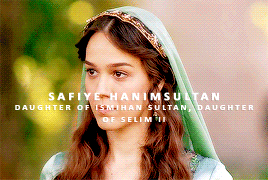

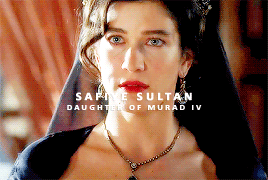
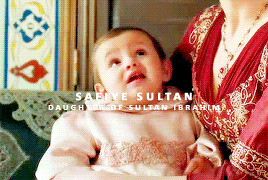



Ottoman Princesses named: Safiye
Safiye is the Turkish equivalent of the Arabic name Safiya or Safiyah, meaning 'pure'. As it was the name of one of the Prophet Muhammad's wives, it was sometimes used for Ottoman princesses as well.
#history#historyedit#ottoman history#safiye hanimsultan#ismihan sultan daughter of selim ii#princessesnames#safiye sultan daughter of murad iv#safiye sultan daughter of mustafa ii#safiye sultan daughter of ibrahim i#fatma emetullah sultan daughter of mehmed iv#safiye sultan daughter of sehzade salaheddin#ottomanladiesedit
536 notes
·
View notes
Note
Hello! Can you search for ambassador quotes about Nurbanu daughters?)
Marcantonio Barbaro: "[Sokollu Mehmed Paşa] has a young and very beautiful wife and, even though he is sixty-five years old, he fathers a son a year, but each of them dies." He is clearly talking about Ismihan Sultan.
Jacopo Ragazzoni only said that Selim II had five daughters at the time (1571)
Andrea Badoer in 1573 says that Zal Mahmûd Pâşâ is the poorest among Selim II's sons-in-law because he spends most of his income to sustain her wife (Şah Sultan)'s lifestyle.
Interesting bit: Tiepolo says that Murad III loves and esteems his cousin Hümâ-Şâh (Şehzade Mehmed's daughter) very much.
Another interesting bit: again, Tiepolo says that Ismihan loved Sokollu Mehmed Paşa's son from his previous marriage and favoured him a lot. This man is Sokollu-zâde Hasan Paşa (who was older than Ismihan herself!!) and governor of Bosnia.
This is all I could find from home.
#anon#ask post#ask: ottoman history#ismihan sultan daughter of selim ii#sah sultan daughter of selim ii#humasah sultan daughter of sehzade mehmed#murad iii#Anonymous
12 notes
·
View notes